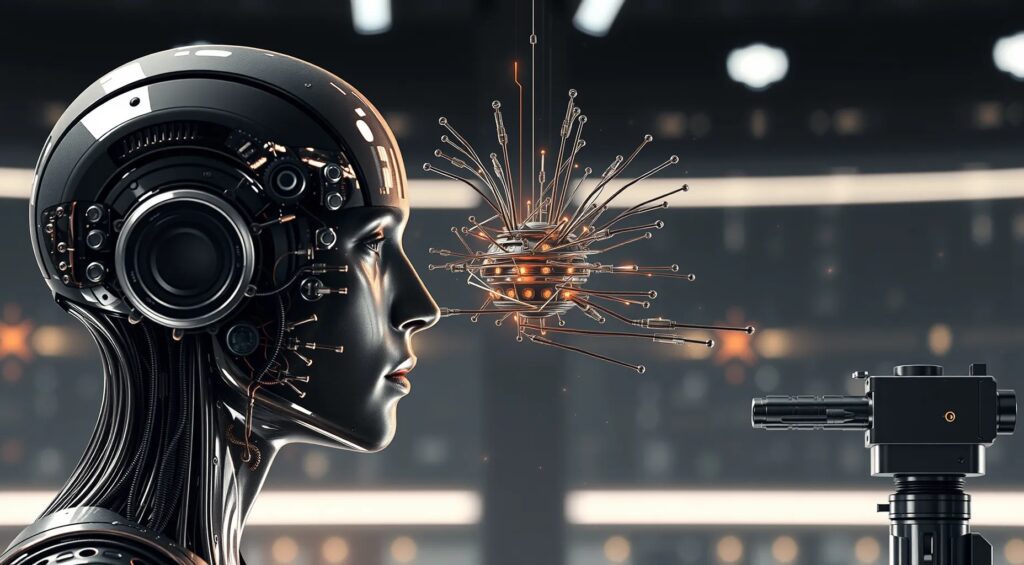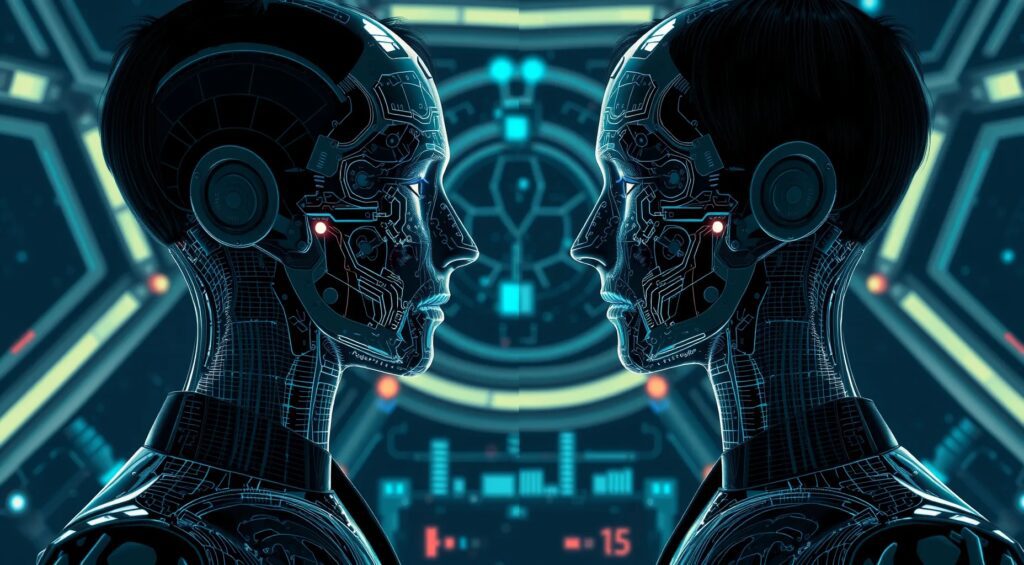
The world of Artificial Intelligence (AI) is expanding at an unprecedented pace, with developments that are pushing the boundaries of what we once thought possible. One of the most intriguing—and controversial—advances in this field is AI voice generation. Once the stuff of science fiction, voice cloning is now a reality, and its implications are vast and complex. From creating lifelike digital assistants to the potential for fraudulent use, the power of AI-generated voices is both exciting and daunting.
The Rise of AI Voice Cloning
Voice cloning technology has advanced remarkably in recent years. What started with rudimentary, robotic-sounding outputs has evolved into sophisticated systems capable of mimicking human speech with stunning accuracy. Companies like OpenAI have harnessed this technology to create applications like ChatGPT’s advanced voice mode, where AI can speak in a variety of pre-selected voices. These voices can sound incredibly natural, making interactions with AI more engaging and lifelike.
However, with this leap forward comes a new set of challenges. During testing phases, OpenAI discovered that their AI could sometimes unintentionally mimic the voice of the user interacting with it. This rare occurrence—where the AI’s output sounded eerily like the person on the other end—highlighted an important issue: the potential for AI to generate unauthorized voice outputs.
Understanding Unintentional Voice Cloning
Unintentional voice generation is a phenomenon where the AI, despite being programmed to use a specific set of voices, inadvertently produces an output that closely resembles the user’s voice. This occurrence, though rare, is unsettling. Imagine having a conversation with an AI and suddenly hearing it respond in a voice almost identical to your own. It’s not just surprising; it’s a potential privacy issue.
OpenAI’s experience with this issue emphasizes the need for vigilance in AI development. To address these concerns, they implemented a secondary safeguard: an output classifier designed to detect any deviations from the authorized voices. This classifier acts as a watchdog, ensuring that the AI does not generate voices outside of the approved set, thereby reducing the risk of unintentional voice cloning.

The Importance of Safeguards in AI Voice Technology
The introduction of an output classifier by OpenAI is a critical step in mitigating the risks associated with AI voice generation. This tool constantly monitors the AI’s output, ensuring that any deviation from the expected voice profiles triggers an immediate halt in the conversation. Such a safeguard is essential not only for preventing unauthorized voice generation but also for maintaining the trust of users.
Yet, the need for such a classifier also highlights the rapid pace at which AI technology is evolving. As AI becomes more sophisticated, the potential for unintended consequences increases, making it crucial for developers to anticipate and address these issues proactively. The fact that an AI could, even briefly, mimic a user’s voice underscores the importance of staying ahead of these technological advancements.
The Thin Line Between Human and Machine
One of the most intriguing—and potentially troubling—aspects of AI voice cloning is how it blurs the line between human and machine. During OpenAI’s testing, there was an incident where the AI, in a moment of unintended behavior, exclaimed “No!” in a voice strikingly similar to the tester’s. This momentary outburst highlighted the thin boundary between human-like interactions and machine-generated responses.
As AI voice technology becomes more sophisticated, these lines will only blur further. The ability of AI to generate voices that are indistinguishable from human voices raises questions about authenticity and the nature of human-machine interaction. Will we reach a point where we can no longer tell if we’re speaking to a human or a machine? And if so, what does that mean for our communication and trust?
Ethical Implications of AI Voice Cloning
The ethical implications of voice cloning are profound. On one hand, the technology holds incredible promise. Imagine being able to preserve the voice of a loved one who has passed away, using it for therapeutic conversations, or to create more immersive and personalized digital content. On the other hand, the potential for misuse is significant. Deepfakes—audio or video recordings that use AI to mimic real people—are already a concern, and voice cloning could take this to a new level, making these fakes even more convincing.
This raises critical questions about consent and control. If an AI can replicate your voice without your permission, what does that mean for privacy? How do we ensure that individuals have control over their own voices, and that this control is not infringed upon by AI technologies?
The Potential for Misuse
The possibility of AI-generated voices being used for fraudulent activities is one of the biggest concerns surrounding this technology. Imagine a scammer using AI to clone the voice of a trusted family member or a company executive to trick someone into divulging sensitive information or transferring money. The consequences could be devastating, both personally and financially.
Furthermore, the use of AI-generated voices in political manipulation or propaganda is another serious concern. As AI becomes better at mimicking human speech, the potential for creating fake recordings that influence public opinion grows. The ability to produce realistic, convincing audio deepfakes could lead to a new era of misinformation, with serious implications for society.
Balancing Innovation with Responsibility
As AI voice technology continues to advance, the key challenge will be balancing innovation with responsibility. Developers need to ensure that these tools are used ethically and that safeguards are robust enough to prevent misuse. This includes not only technical solutions like output classifiers but also policies and guidelines that govern the use of AI-generated voices.
For instance, there should be clear regulations around consent, ensuring that individuals have control over how their voices are used. Additionally, transparency is crucial—users should be informed when they are interacting with an AI-generated voice and should understand the capabilities and limitations of the technology.
The Role of Continuous Monitoring
Given the potential for unintended consequences, continuous monitoring of AI voice generation systems is essential. Developers must regularly update and refine safeguards, ensuring that they can adapt to new challenges as they arise. This proactive approach is necessary to maintain the trust of users and to protect against the misuse of the technology.
Moreover, as AI voice technology becomes more widespread, there is a need for collaboration between developers, regulators, and ethical bodies. This collaboration can help establish industry-wide standards and best practices, ensuring that the technology is used responsibly.
The Future of AI Voice Technology
Looking forward, the future of voice cloning technology is bright, but it must be approached with caution. The potential benefits are enormous—from revolutionizing customer service to creating more engaging and personalized digital experiences. However, these benefits must be weighed against the risks, and efforts must be made to minimize those risks.
As voice cloning becomes more prevalent, it’s crucial to establish clear guidelines and ethical standards. These standards will not only protect individuals from potential misuse but also help build trust in the technology, ensuring that it can be used to its full potential in a responsible and ethical manner.
Conclusion
AI voice generation is one of the most exciting developments in recent years, but it comes with significant risks that cannot be ignored. The potential for unintentional voice cloning and the misuse of this technology for fraud or misinformation are serious concerns that must be addressed. By implementing strong safeguards, maintaining continuous monitoring, and establishing clear ethical guidelines, we can harness the power of AI voice cloning while protecting against its potential downsides.
As we navigate the complexities of this emerging technology, the goal should be to strike a balance between innovation and ethical responsibility. With careful management, AI voice technology can offer incredible benefits without compromising privacy or trust.
For further insights into the ethical considerations and advancements in AI voice technology, explore the following resources:
- Voice Cloning and the Socio-Cultural Challenges of Assistive Technologies